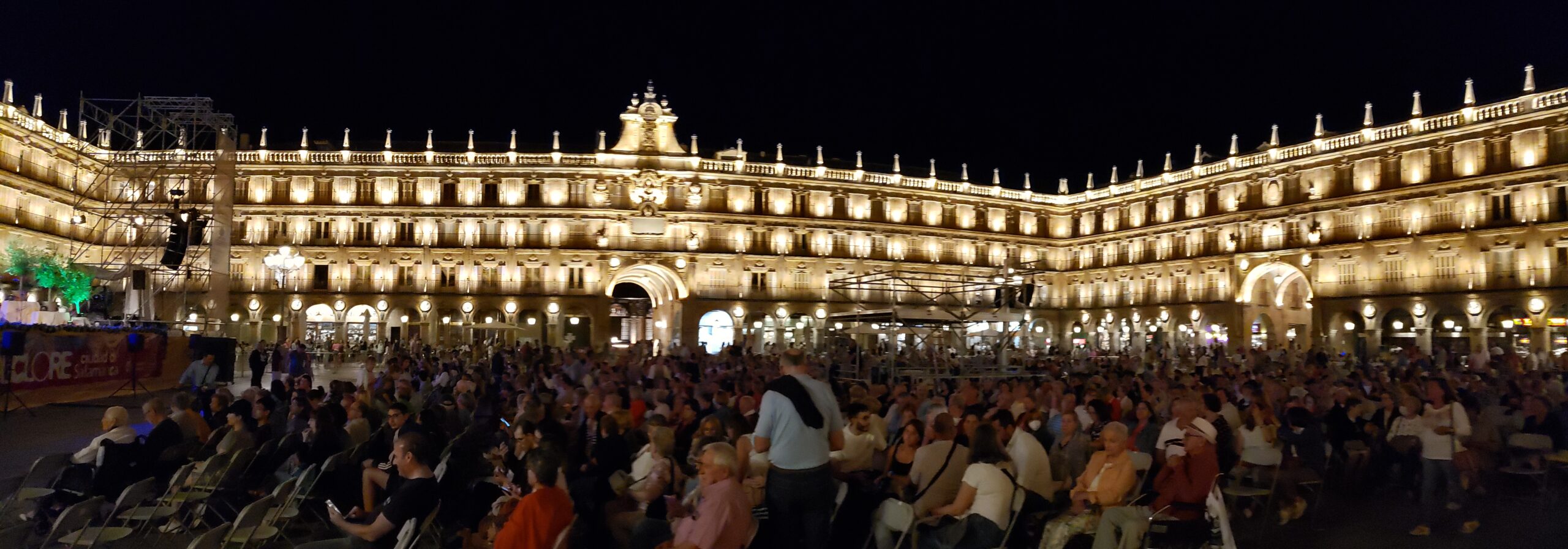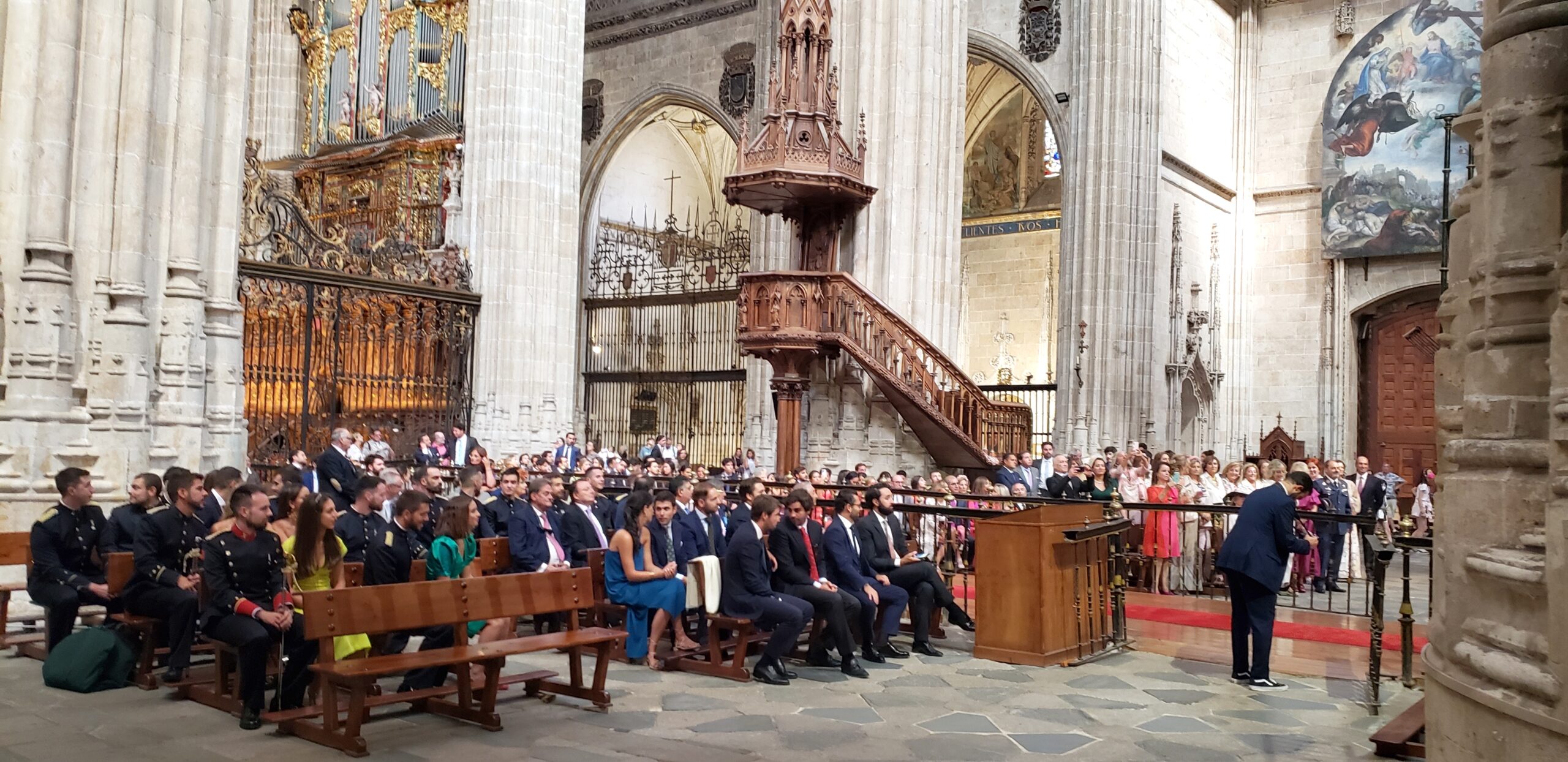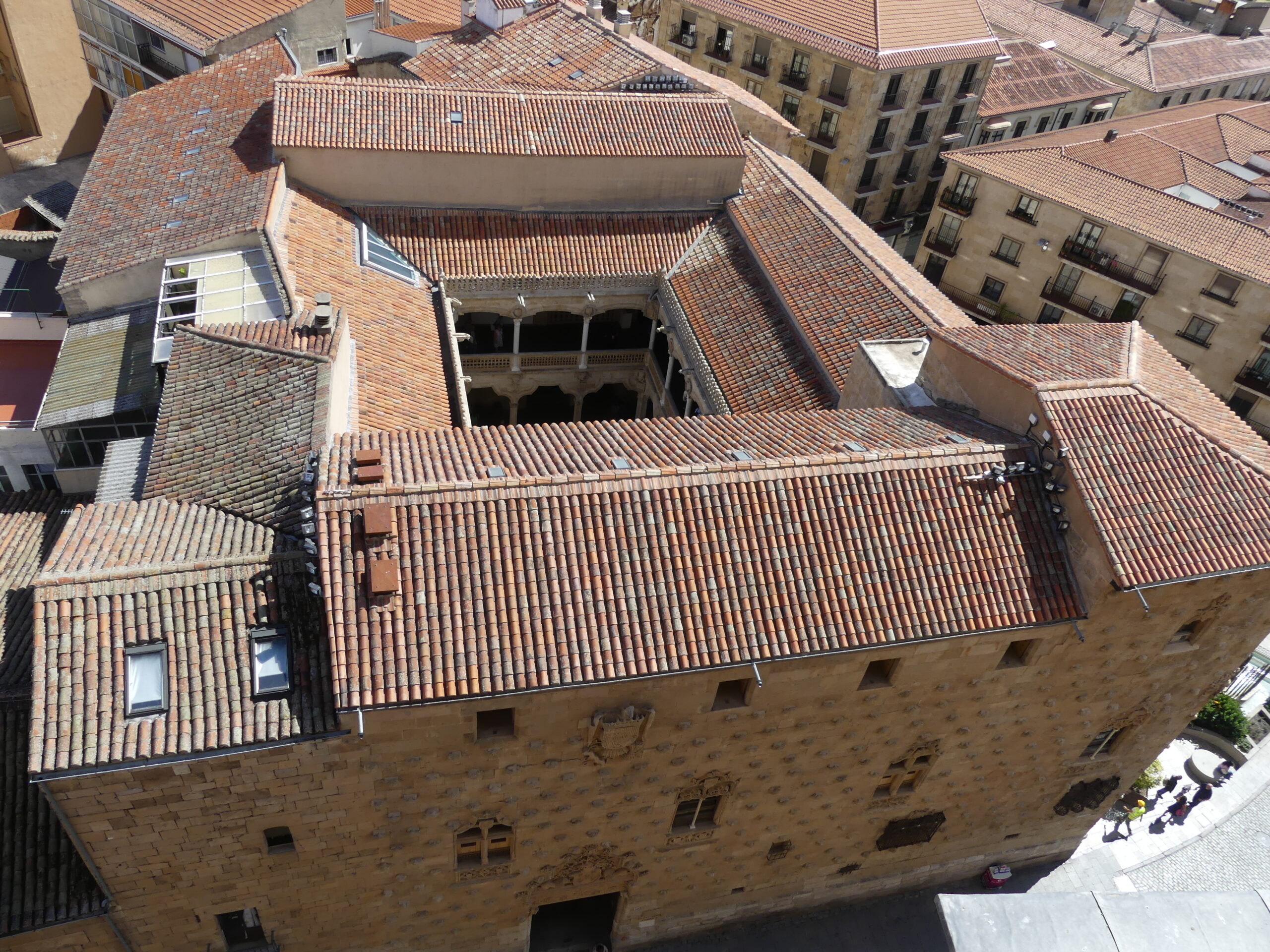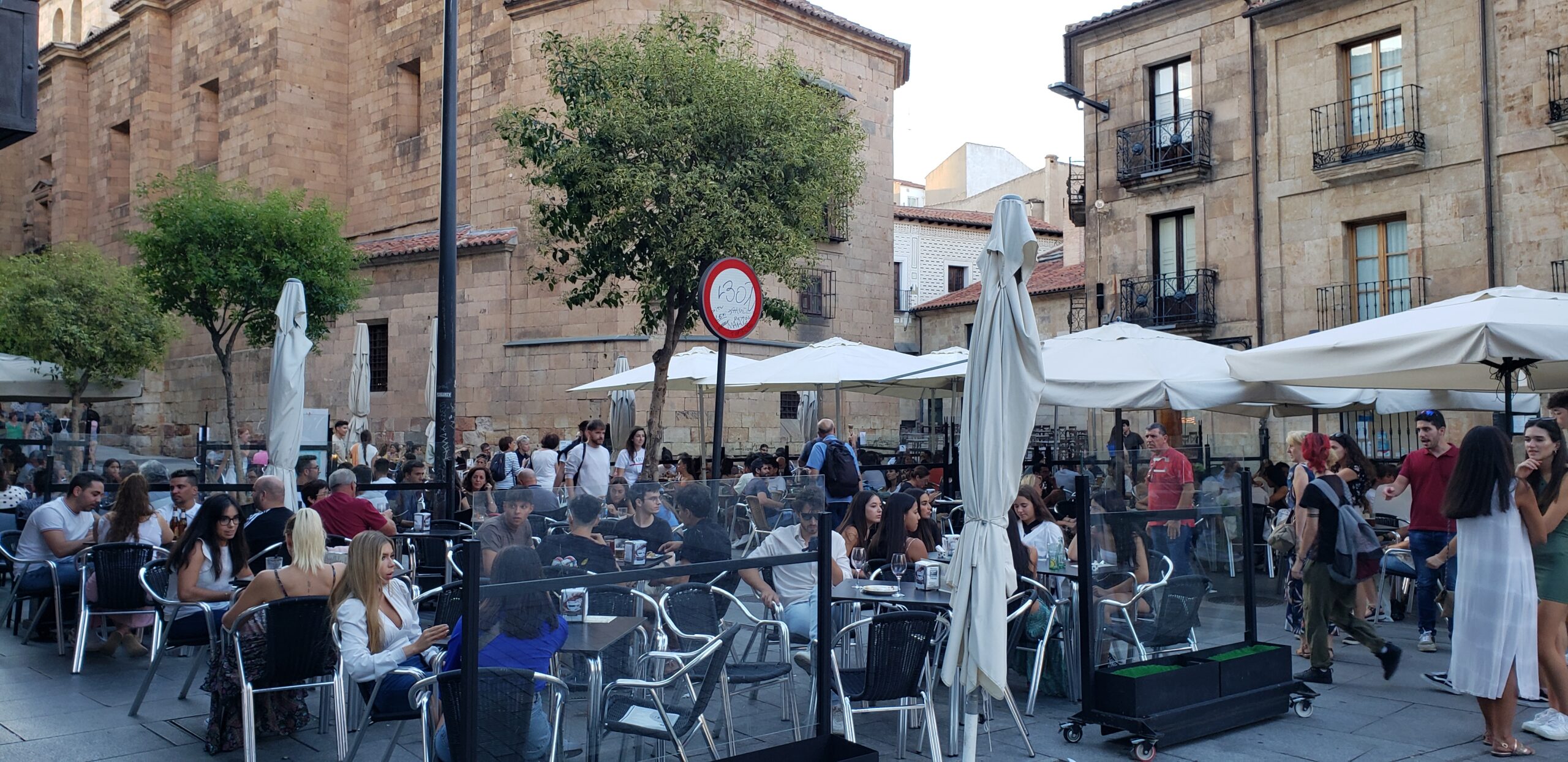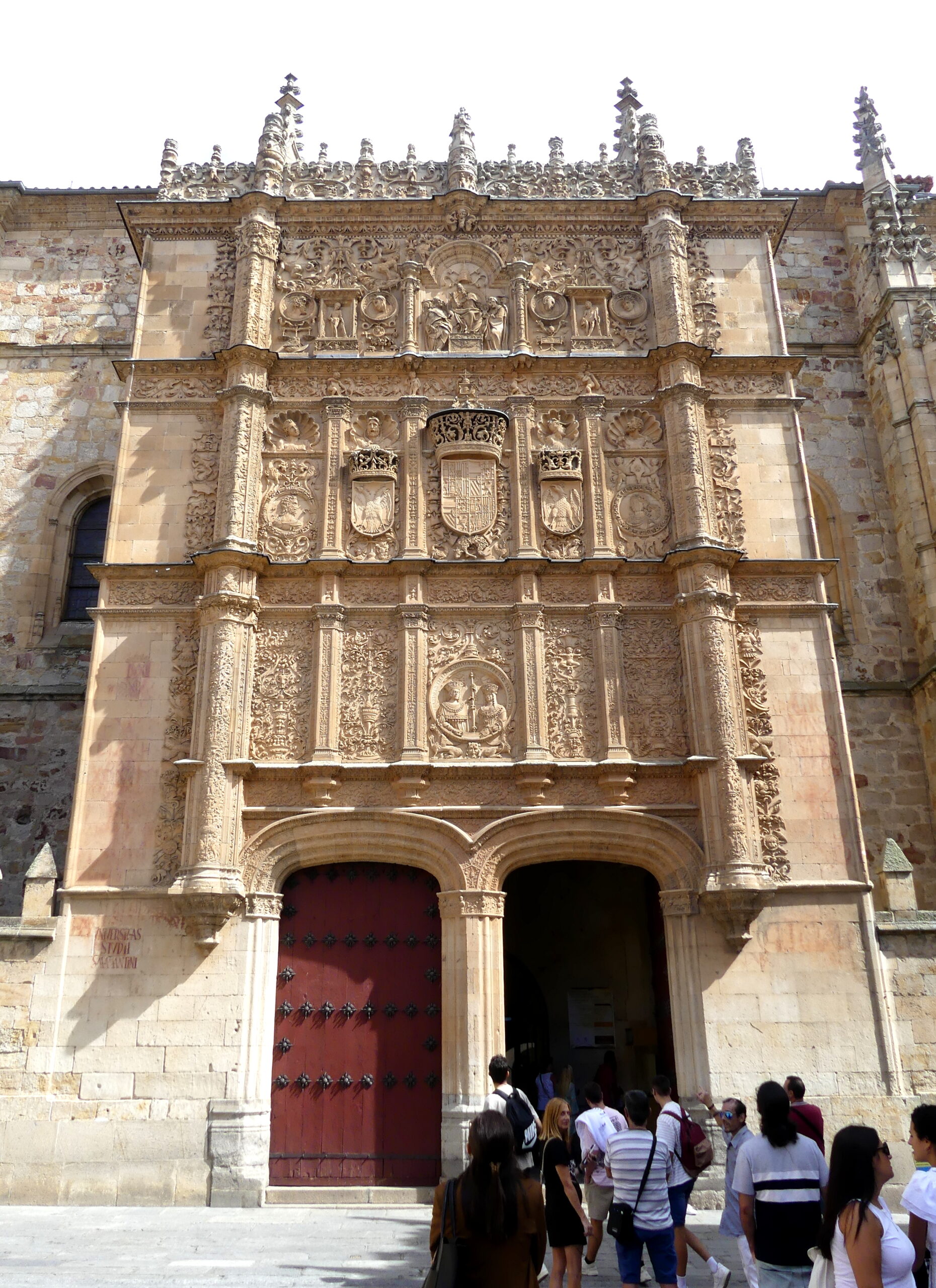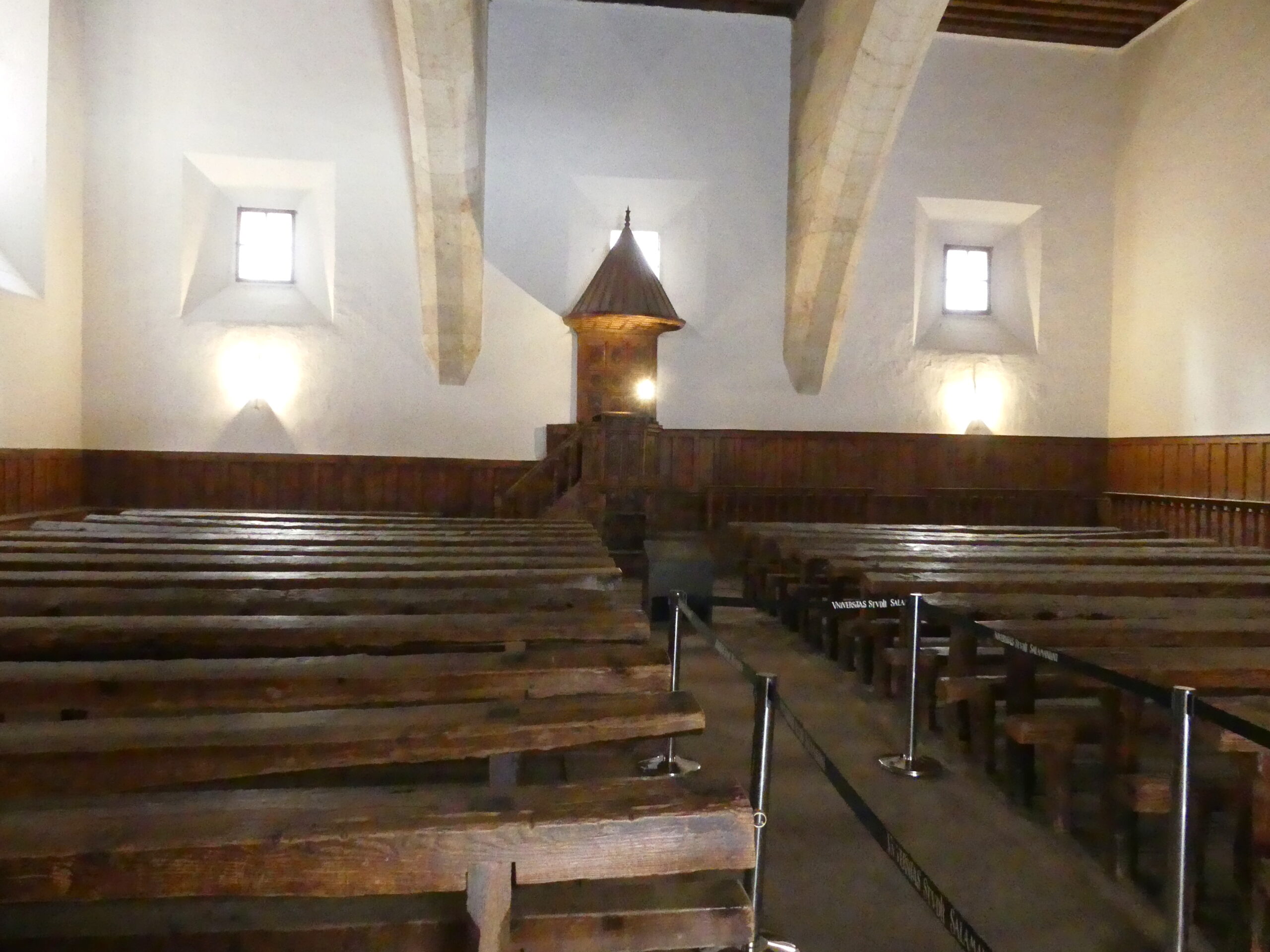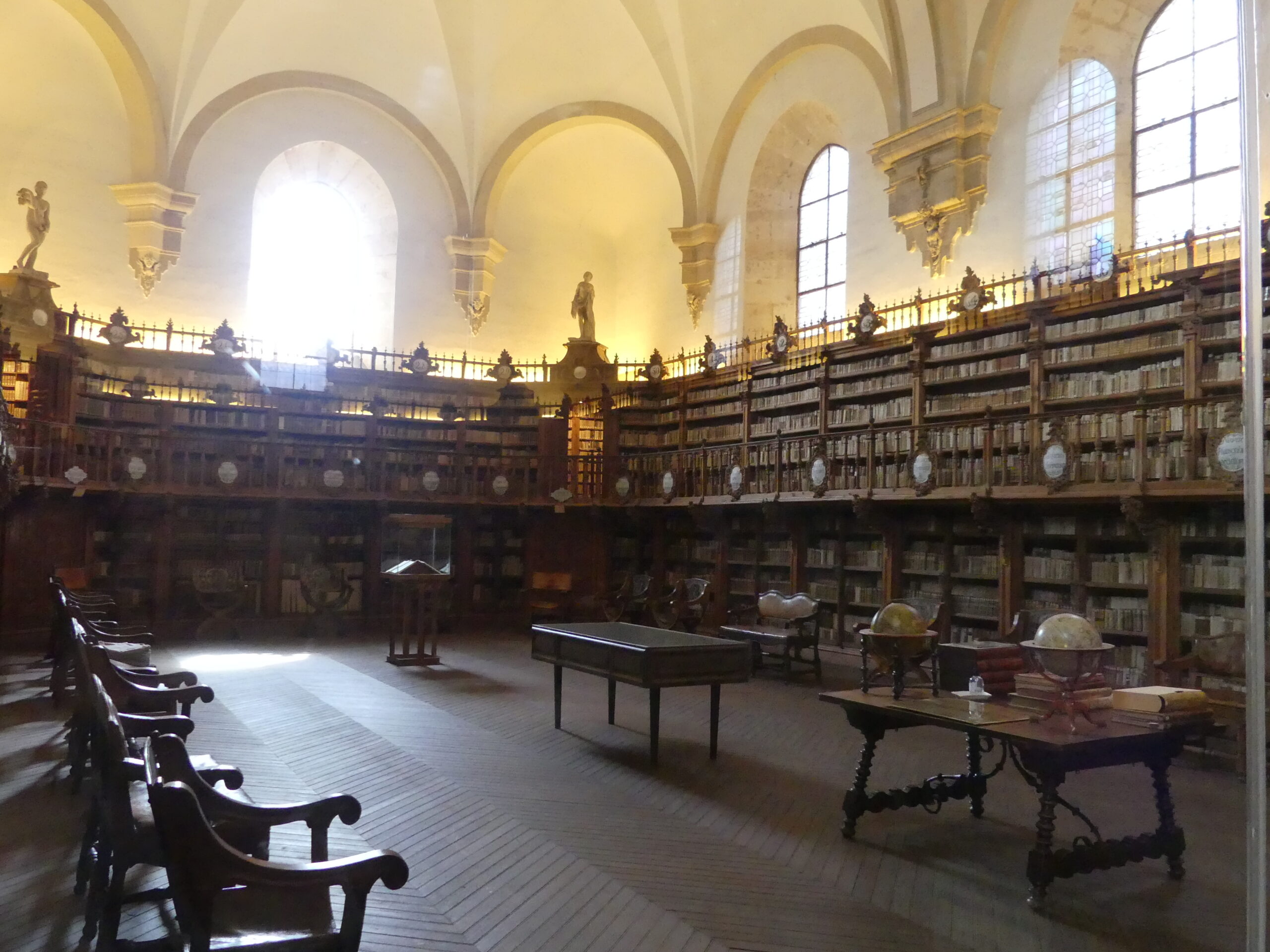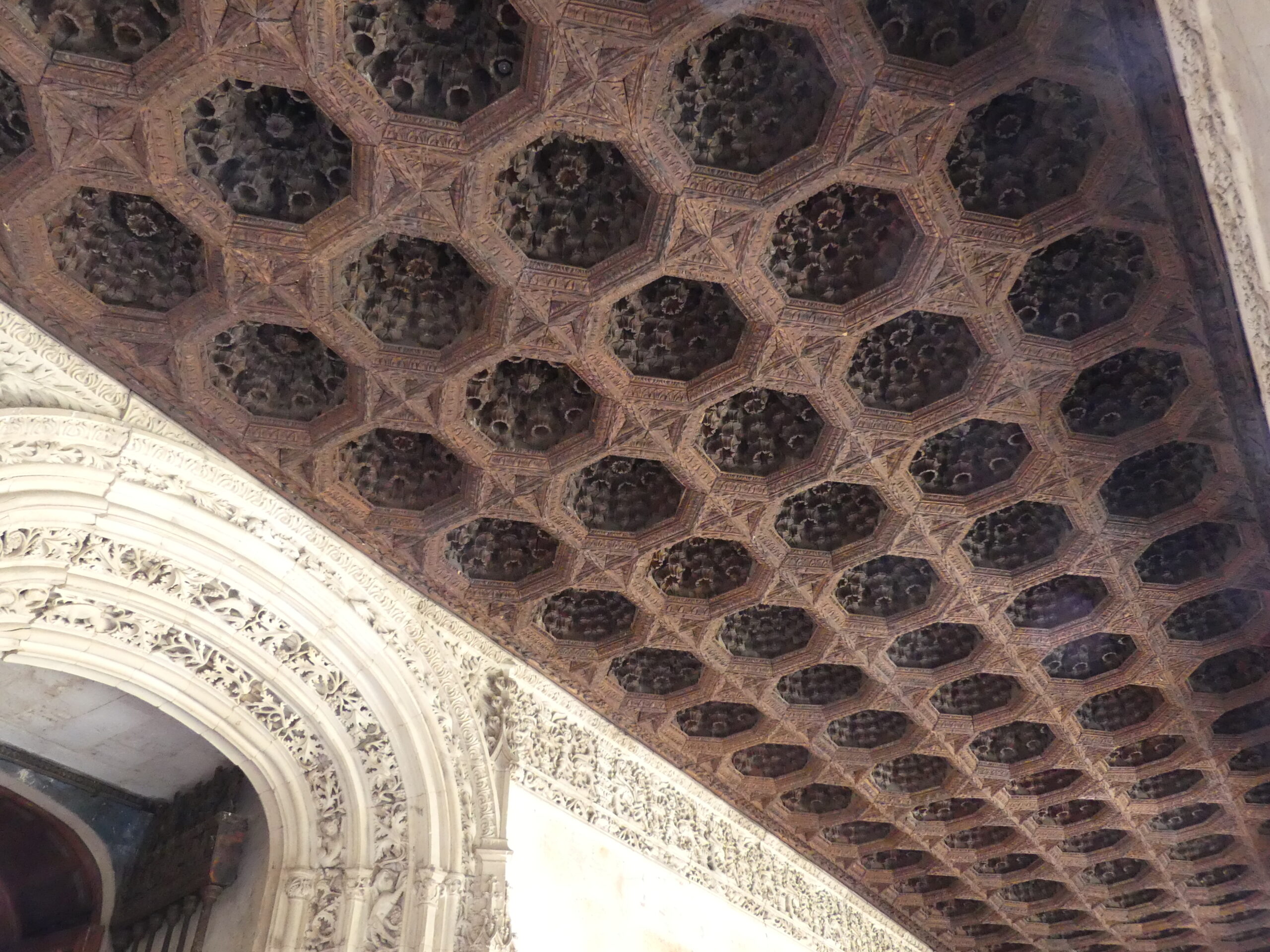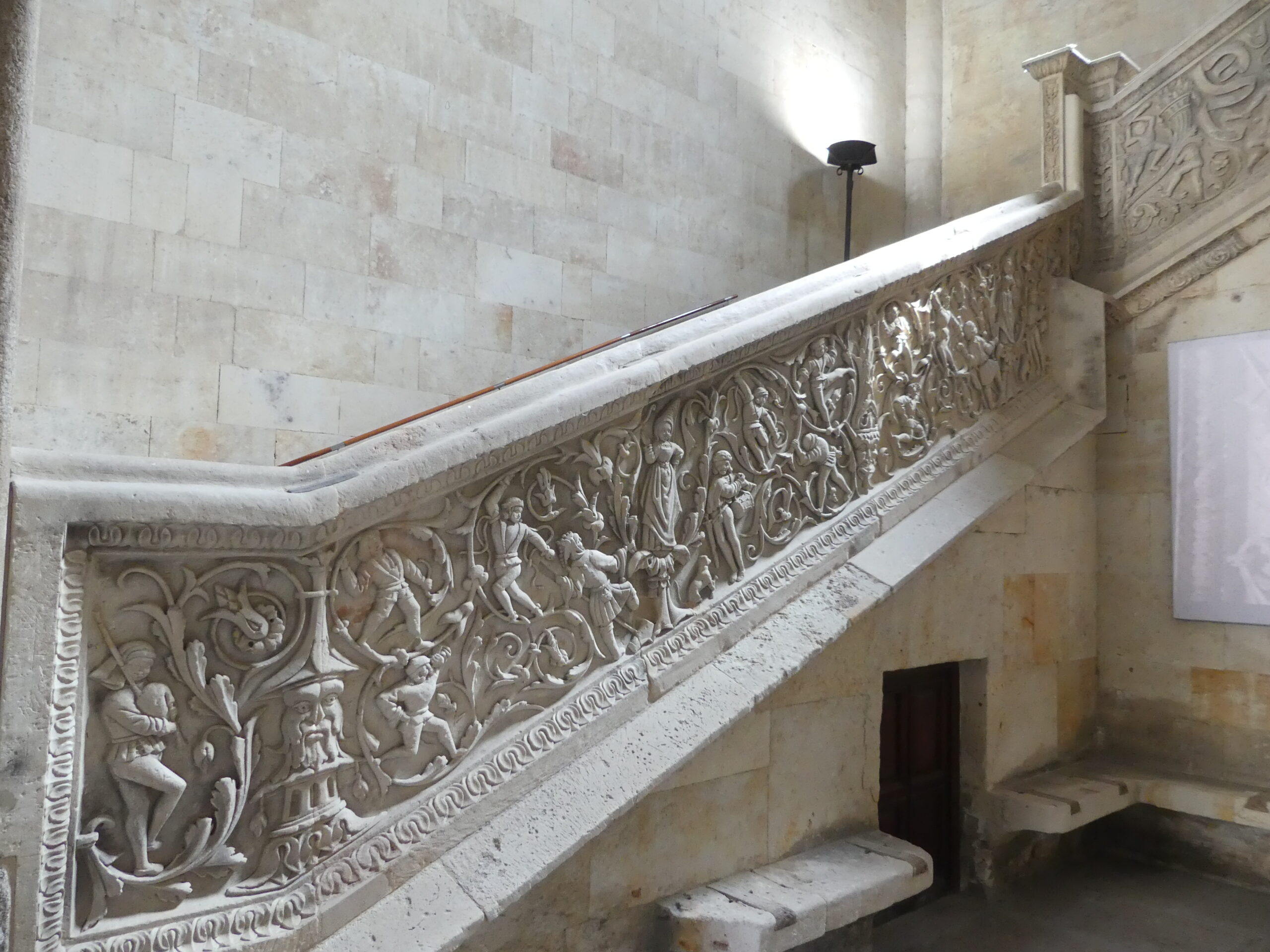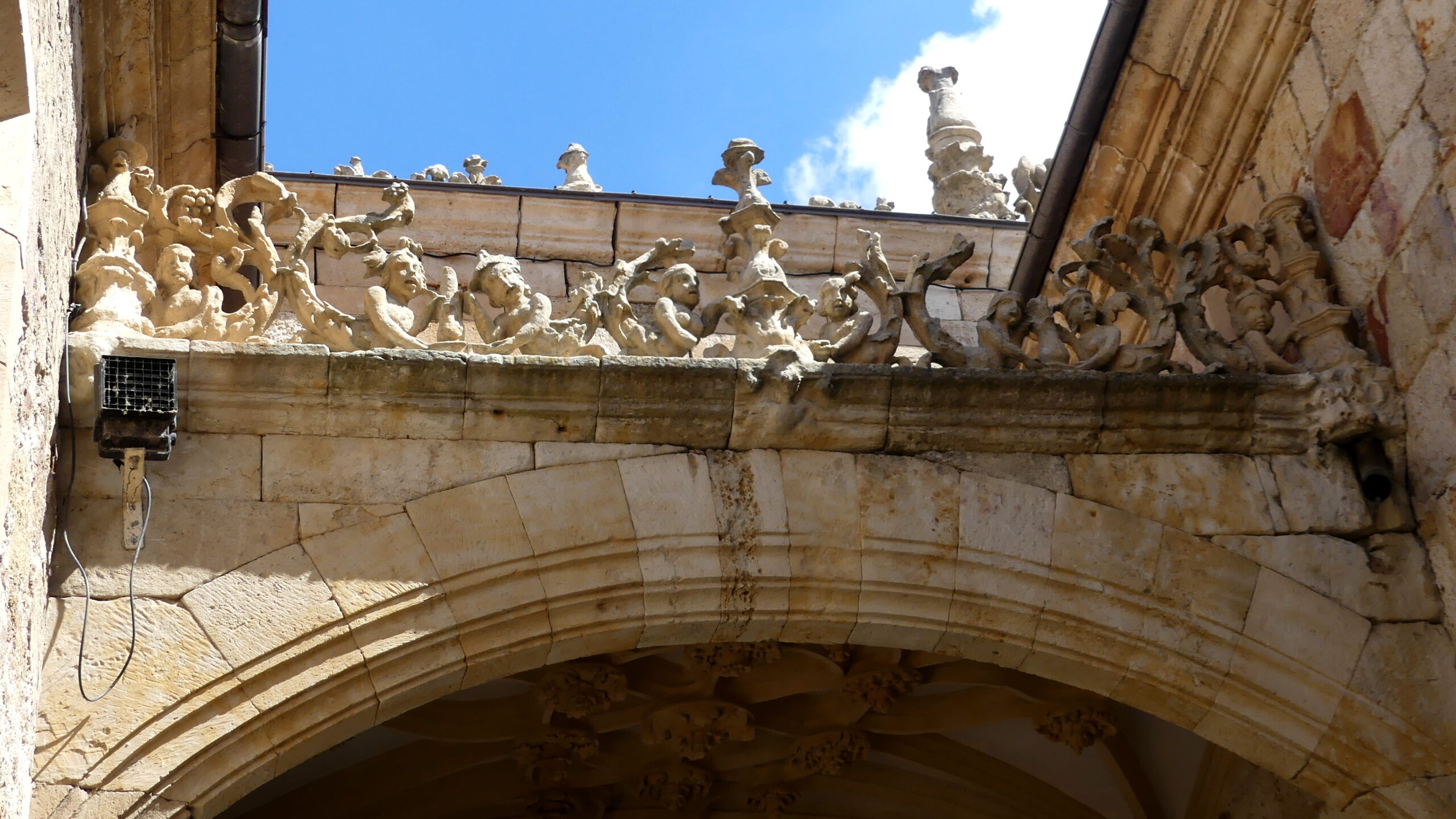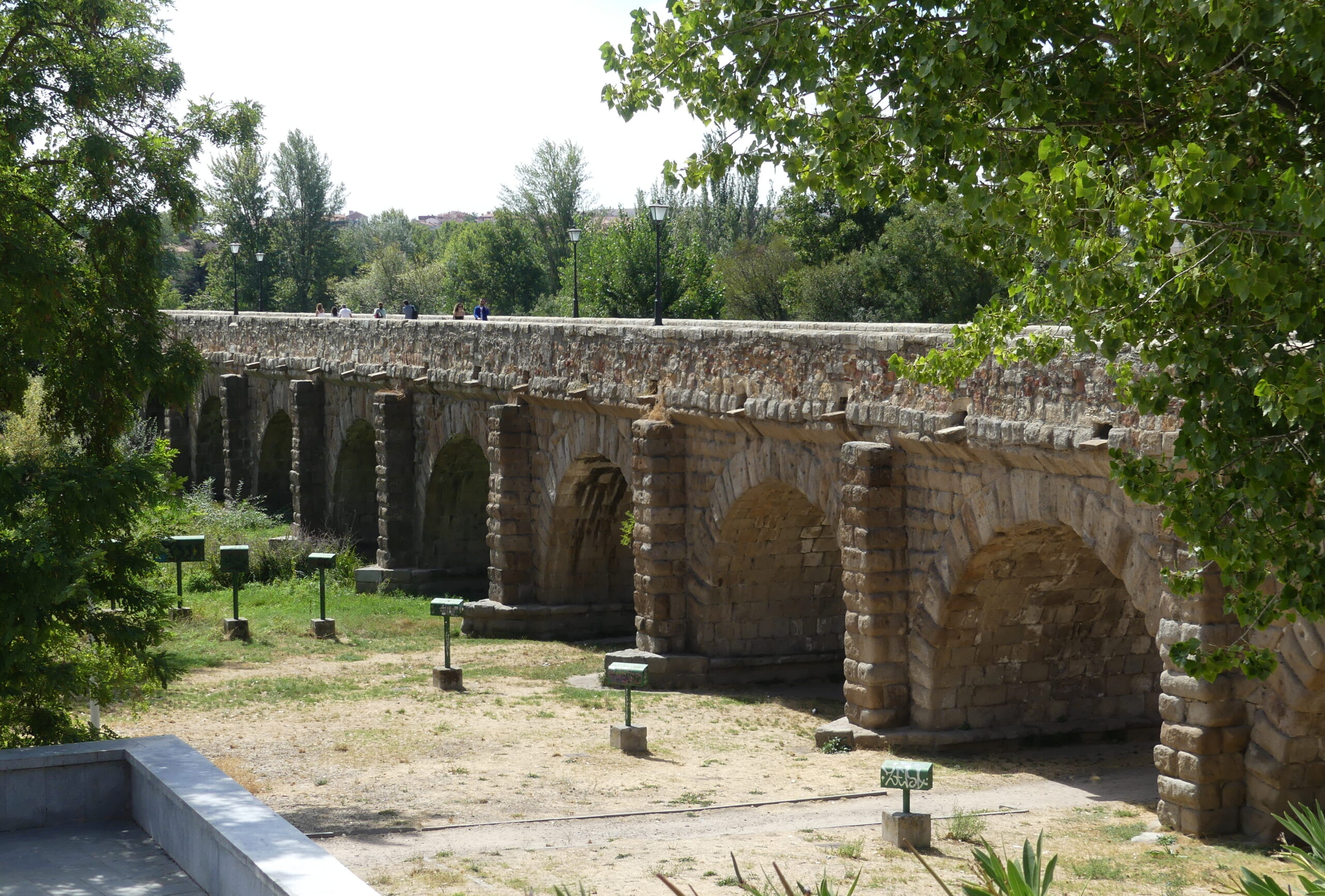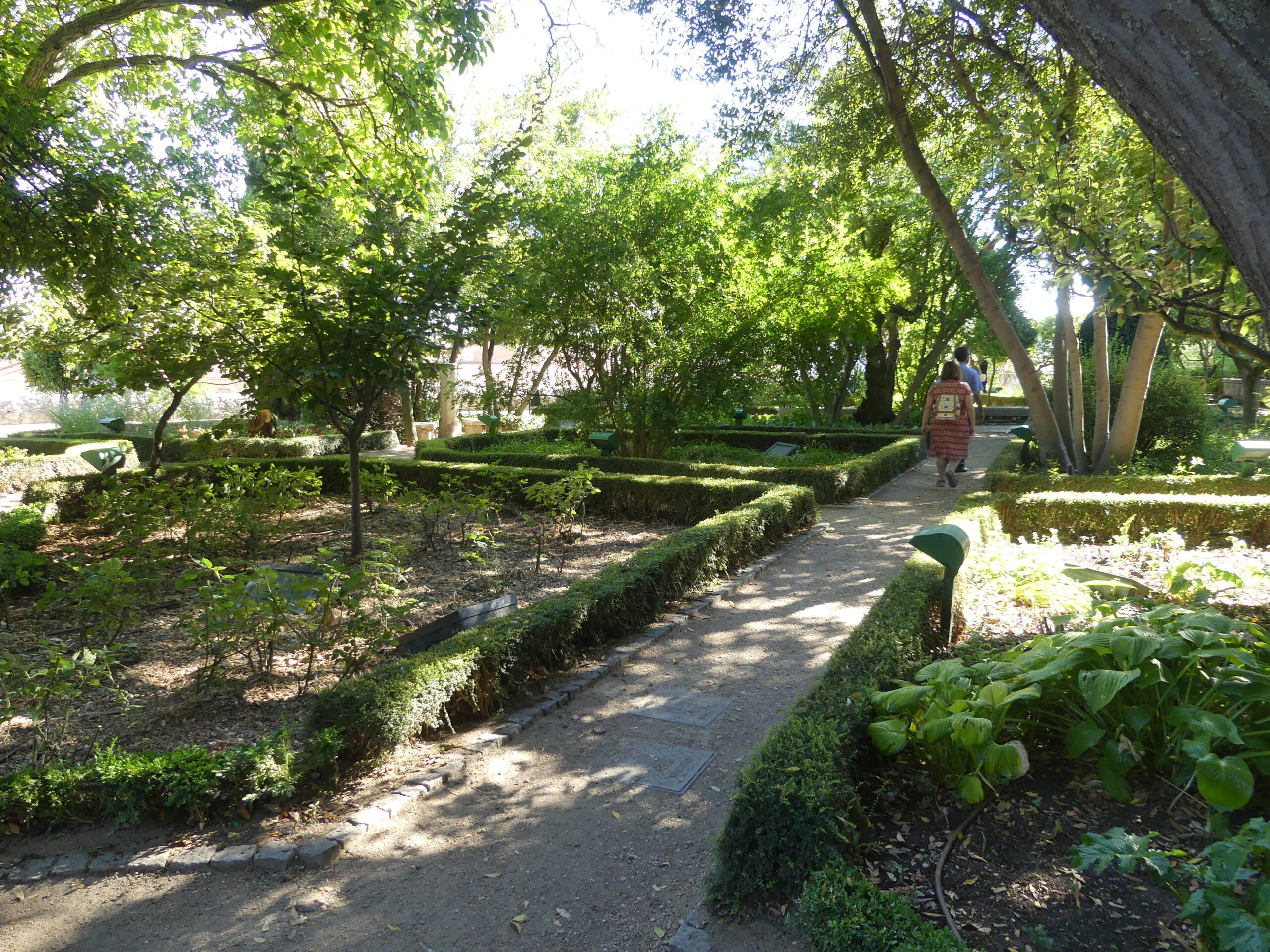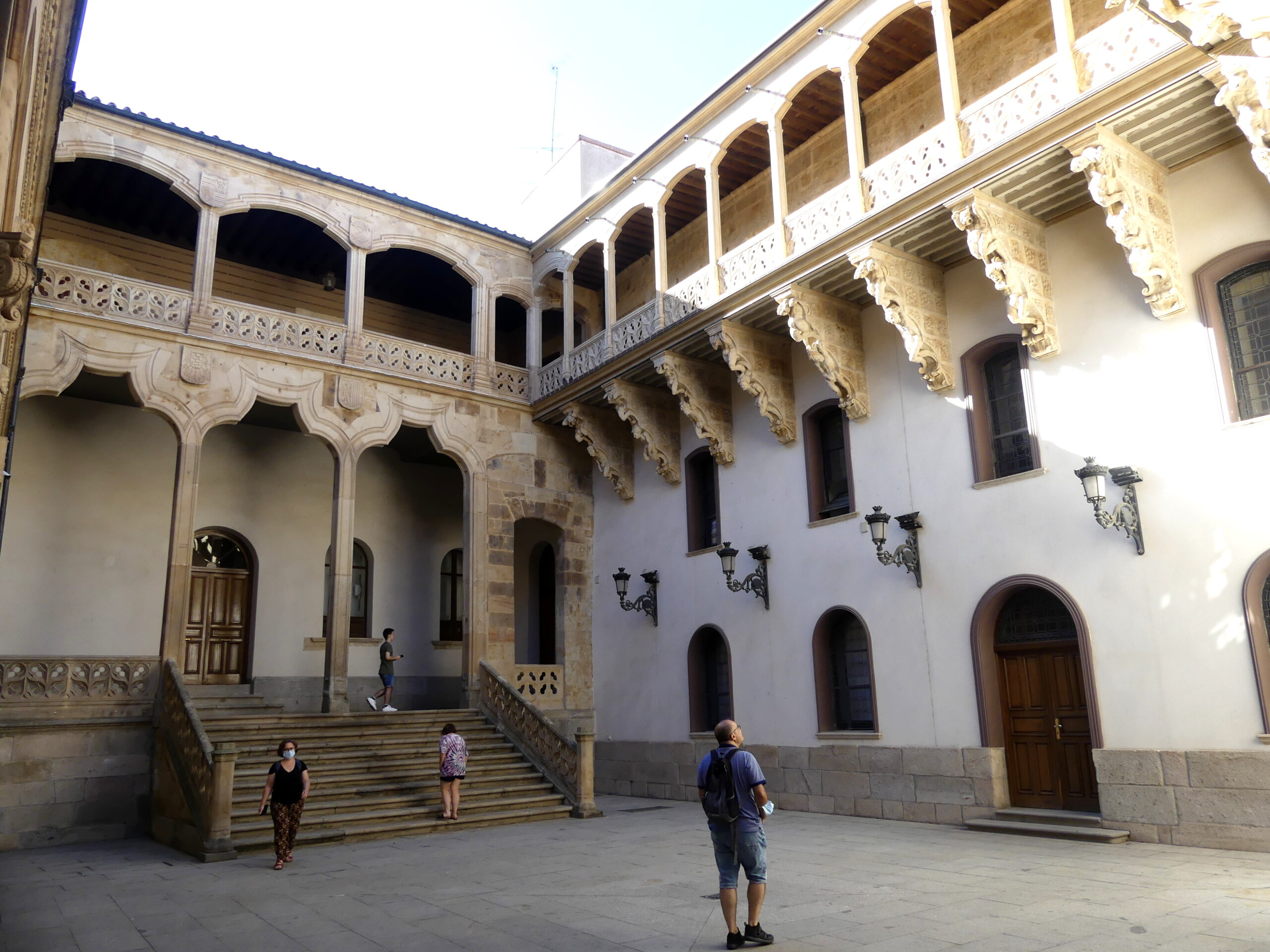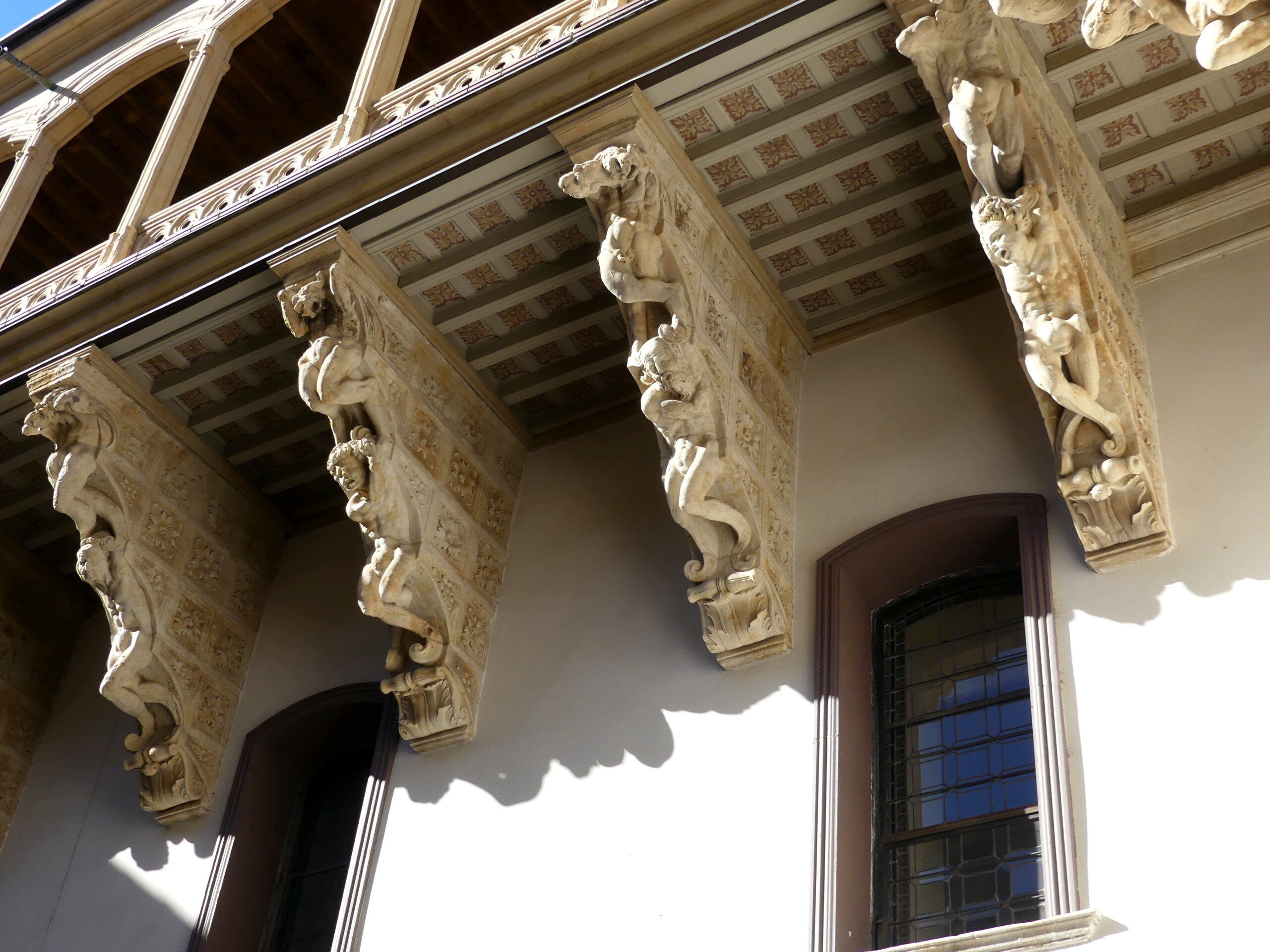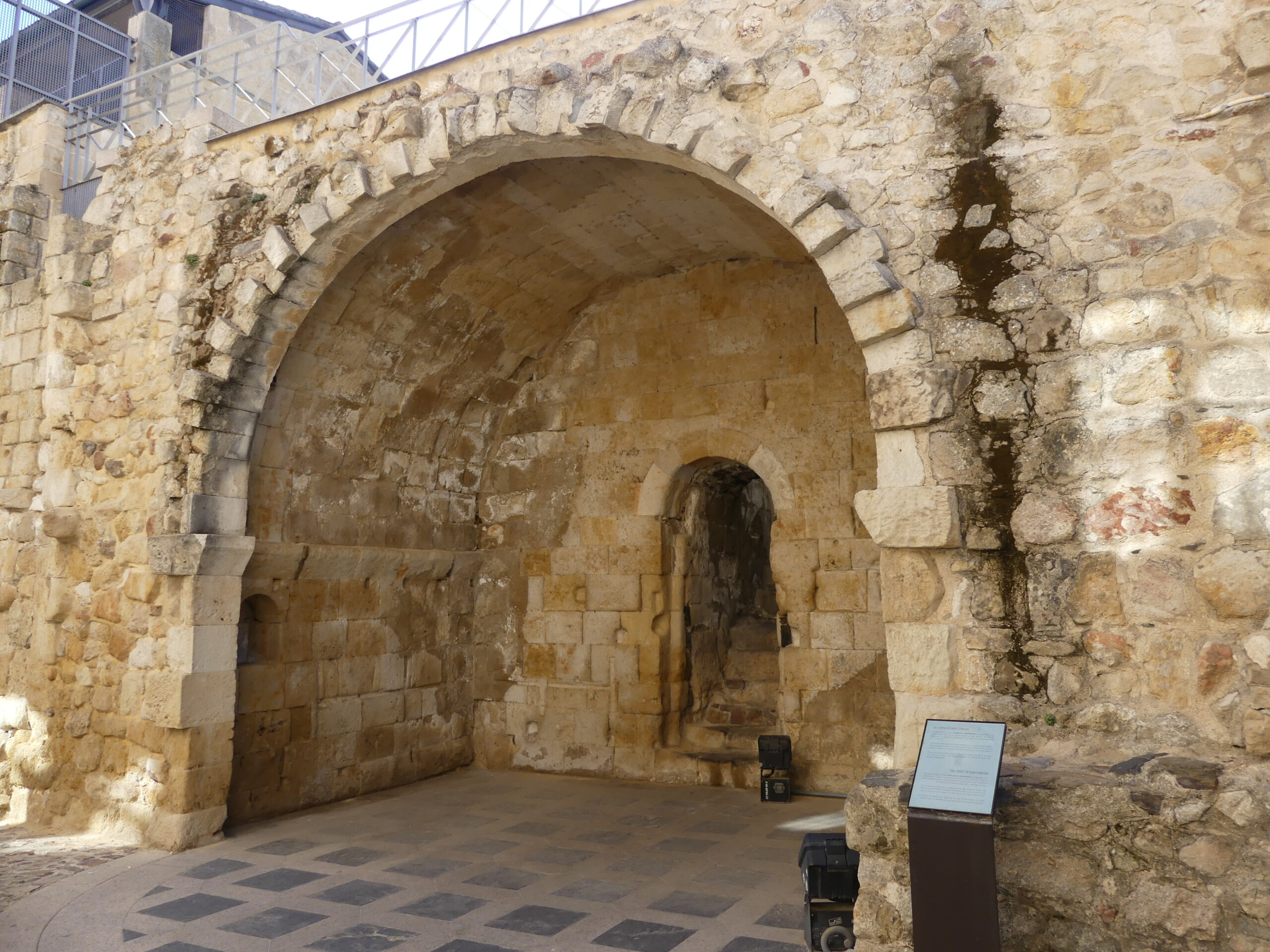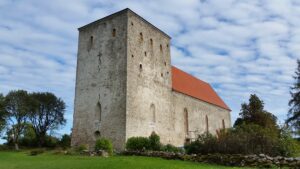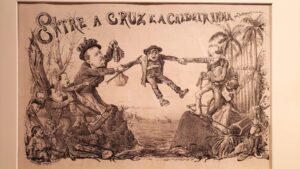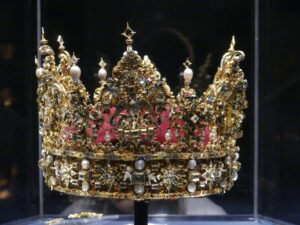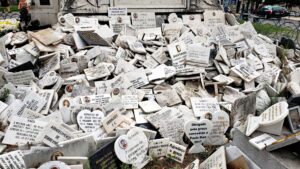In brief: The sacred and the secular have always lived side by side in Salamanca. This post wanders along the secular side (university, courtly, and commercial life).
Our other post about this delightful city honored the grand churches and monastic centers (Click here to read Sacred Salamanca).
To start…the sacred and secular together. At the New Cathedral, a wedding party awaits the bride between the dazzling choir loft we showed in the Sacred Salamanca and the gleaming altar (Click here to read the post.) This central section of the church had originally been intended for the wealthy and important people of the region, mostly walled off from the general populace. At least with respect to weddings – from what we could tell of the fancily dressed attendees – the upper class still has some privileges.
Though just as ancient as the sacred here, the secular remains very fresh in the city. The massive ochre blocks of sandstone, which seem to constitute every building, look newly laid all across town even when sustaining 800 year old structures.
One example is the Casa de las Conchas. A top down view from a bell tower of the Jesuit La Clericía church across a narrow lane reveals the House of the Shells, adorned with over 300 stone shells in a Moorish influenced diamond-like array.
This palace was built at the very end of the 15th century by a Knight of the Order of Santiago, who was also a Professor of Law at the University and on the Royal Council. It marks a time when court nobles returned to cities and helped develop them. Many stories try to explain why the shells, including an expression of love. And legends say that some treasure is hidden behind one of them. Take a shot!
Plaza Mayor and the little plazas
The broad streets, moreover, seem much more modern than the medieval city, with ample meeting places like the incomparable Plaza Mayor. This grand space is lovely during the day and spectacular at night, when its magical illumination invites evening strollers and diners within.
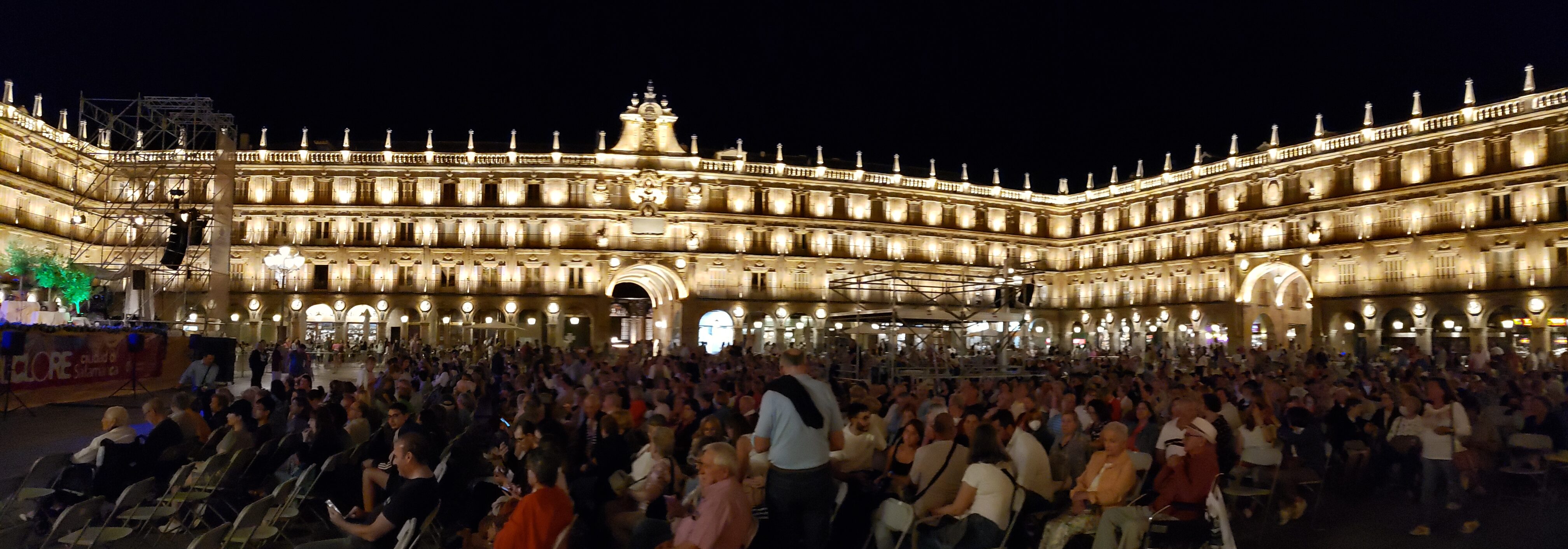
Finished in 1755, it lasted a century as a bullfighting arena, not a meeting place. Now, parts of the bulls sizzle on the plates of the hundreds sipping wines and munching tapas at the many eateries. The Plaza seems to be the essence of symmetry, with three residential levels running repetitively above the 88 supporting arches featuring medallions with historical figures like El Cid. But the dimensions and features are really irregular. In one sense, it feels you’ve been here before. There’s the well-known one in Madrid and many others across Spain, as well as in so many colonial towns of South America. But this one’s still damn impressive.
Bustling with visitors and locals alike, Salamanca is a town that stirs from early to very, very late – with the exception of the typical Spanish closing hours in mid-afternoon.
Turning a corner outside those quiet times, you come upon plazas large and small that crackle with conversation, the delivery of plates heaped with food, and good cheer.
This is the life…as the afternoon break in the day winds down, the locals gather for a light meal and a mix of drinks at the tapas bars. The heavy meal starts around 9pm and lasts for a while. The photo shows one of the liveliest plazas, served by at least four bars, elegantly surrounded by large brick sandstone buildings.
The University of Salamanca
Most notable in secular Salamanca is its University, continuously operating since 1218, and still educating students in its old rooms.
The elaborate Plateresque baroque entry to the major disciplines – Escuelas Mayores – at the University of Salamanca, with a central seal of King and Queen. Some years ago here, Columbus argued his case for sailing to the Indies (or in reality the Americas). Thirty thousand registered students still pass through these doors to attend their classes.
This classroom appears as old as the 13th century school. When Cervantes attended classes here, perhaps he sat on one of these benches.
The impressive wood bookshelves of the medieval University’s Old Library, in their 18th century appearance, still contain many old volumes, though the venue doesn’t seem well wired to the internet.
At the University, this is what remains of a 1480s map of the skies as if you could see the stars (and constellations) during the day. Note, the chariot of the Sun is in the middle. Some say the date observed here was mid-August 1475, but scholars note that not all these constellations would have been visible in Salamanca. Teachers back then used the painted dome to teach astrology; and you can likely detect five major constellations that have survived: Leo, Sagittarius, Scorpio, Virgo, and Libra. The four winds still blow at the base. Early on, the University leaders endorsed the Copernican astrology, with the sun at the center of the universe.
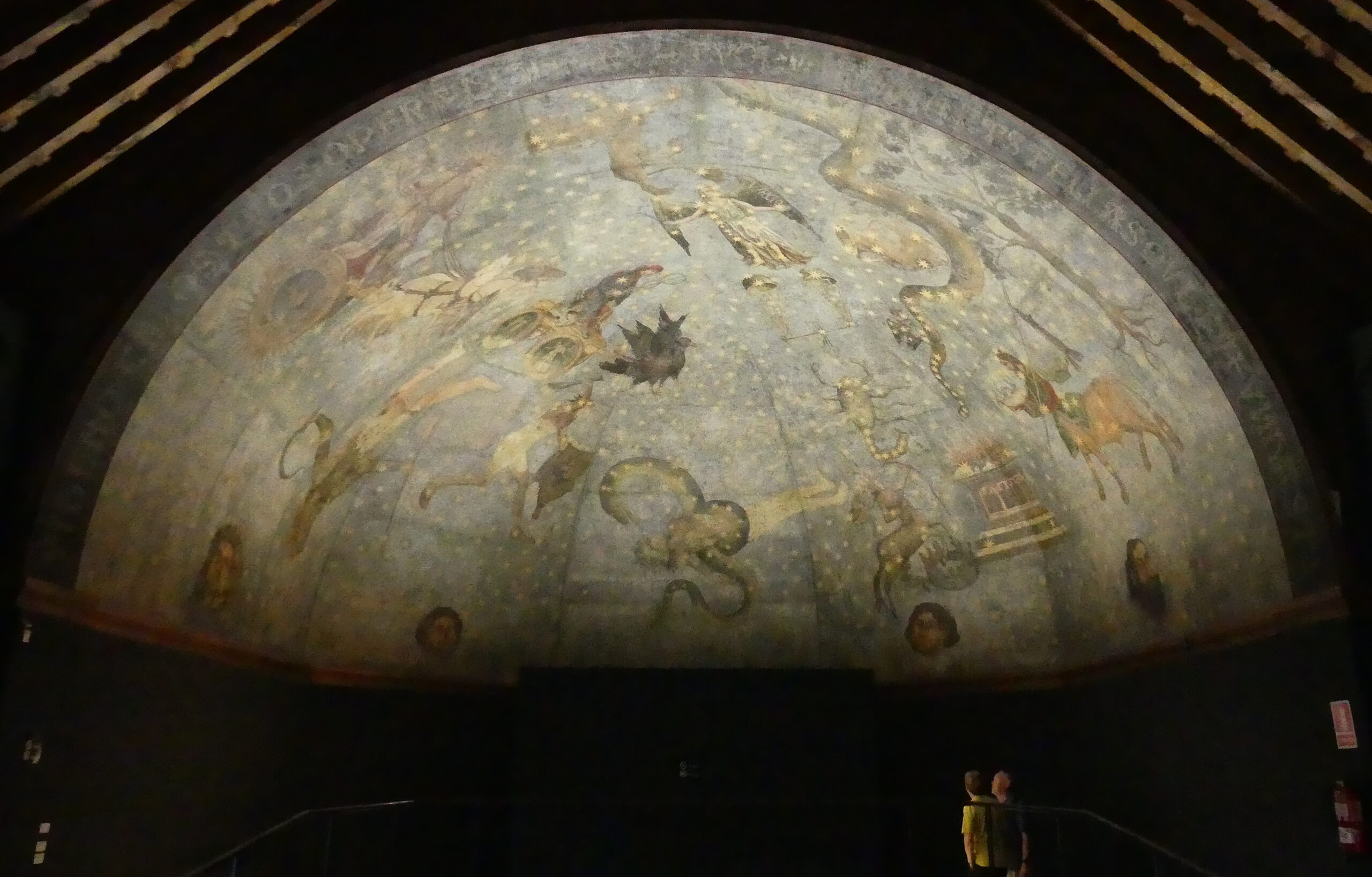
A sumptuous ceiling along the cloister aisles at the University.
The ground floor portion of an early 16th century stone staircase at the University called the Stairs to Knowledge. It’s an ascent to the upper floors symbolic of moral and spiritual understanding. We ended at this bottom part, which seemed appropriately frivolous and indolent.
Our revels now are begun. This arch leading out of the Minor Schools of the University seems to be heralding a festive party, perhaps back at that nice plaza…
And more…
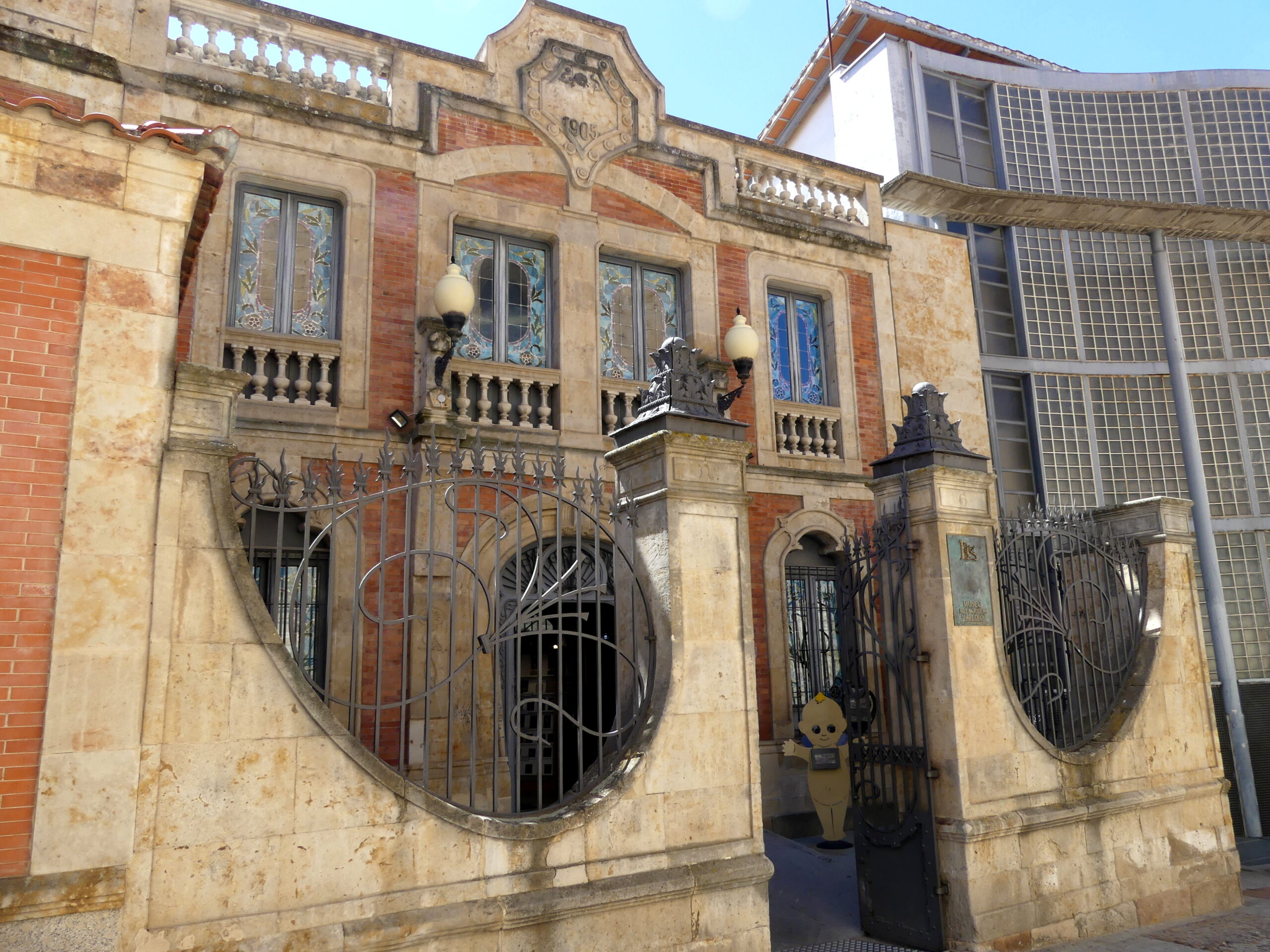
By the 19th century, the wealthy occupied palaces in the outskirts of the medieval town. One built at the start of the 1900s, home to a wealthy collector of Art Nouveau work, looks out over the river near the Cathedrals.
This is the entrance to what is now a Museum of Art Nouveau, Casa Lis. The admirable collection of period pieces fits nicely into the stylish building. Its portico featured a long stained glass window looking out onto the river. Its main atrium consisted of a multi-colored glass ceiling. And what’s more, a special exhibit of Dali’s colorful illustrations for Dante’s Divine Comedy showed off some of the best of that artist’s talent.
This sturdy Roman bridge – finished in 1AD and featured in the city seal – supported commercial traffic and visitors for nearly 2000 years. At 360 meters (about 1200 feet) it remained the main transit across the Tormes River into the 1900s, though patched up a bit over time and extended as well. Now it’s pedestrian only.
This long garden – Huerto de Calisto y Melibea – partly formal and partly natural, peaks over the wall at the river edge of the city near the Roman bridge. It’s a pleasant refuge from the heat, or the bustle of town, frequently used by the local residents and admired by the tourists.
It’s named for a famous tryst between two lovers in a 1499 story who met in a garden to seeking, not escape, the heat.
Another palace, La Salina, from the 19th century was quite unusual. This was owned by a famous Spanish pianist Martín Sánchez Allú. In the atrium, which is open to view for free, a few paintings decorate the walls. A piano continuously plays his music over speakers, with an odd kerchunk every so often.
But most interesting are the figures below the painted overhangs of the roof, each of which shows a human figure tormented by a grotesque one. It’s as if one has joined those sentenced to purgatory, or worse.
Finally, speaking of the devil…near the Cathedrals and the garden gapes a storied cave – a cavern remaining from an old church – where the devil is supposed to have trained agents to turn the world sinful. Many authors have used the Cave of Salamanca in their tales: Cervantes, Villaroel, Calderon de la Barca, other Spanish writers, and even Sir Walter Scott. As a result, caves in Latin America are often called Salamancas, places of mystery and satanic arts.
(To enlarge any picture above, click on it. Also, for more pictures from Spain, CLICK HERE to view the slideshow at the end of the itinerary page.)


